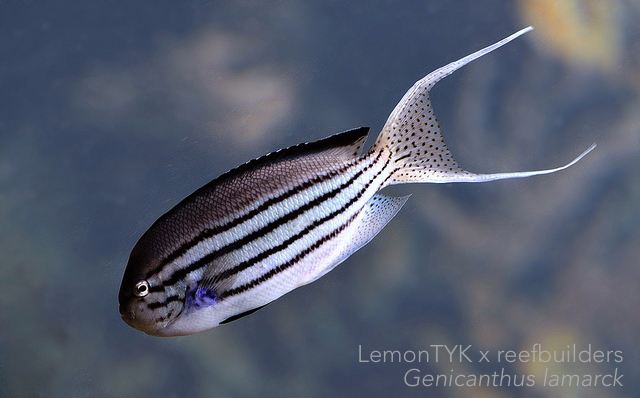Like the insanely beautiful traffic cone coloured male Genicanthus semifasciatus in the Dallas Aquarium, Steinhart in the California Academy of Science has its own studly Genicanthus to boast. G. lamarck is a common species with a rather large distribution in the Indo-West Pacific. Like all members in its genus, the Lamarck’s Angelfish is elongated and equipped with a set of lyre tails and is strictly planktivorous, preferring to feed only from the water column.
All Genicanthus species are sexually dichromatic, which means the sexes display obvious differences in colour. Being protogynous sequential hermaphrodites, all individuals start life as a female and are only capable of changing into a functional male depending on social cues within the hierarchy. Of the Genicanthus angels however, G. lamarck is the least dichromatic and males look rather similar to females.
The male, as pictured above, is differentiated from the females by having black ventral fins (white in females) as well as completely horizontal body stripes. In the female, the uppermost stripe is curved downward at the end to join with the lower caudal lobe. In large matured specimens, a blue spot may develop on the fin base as well.



